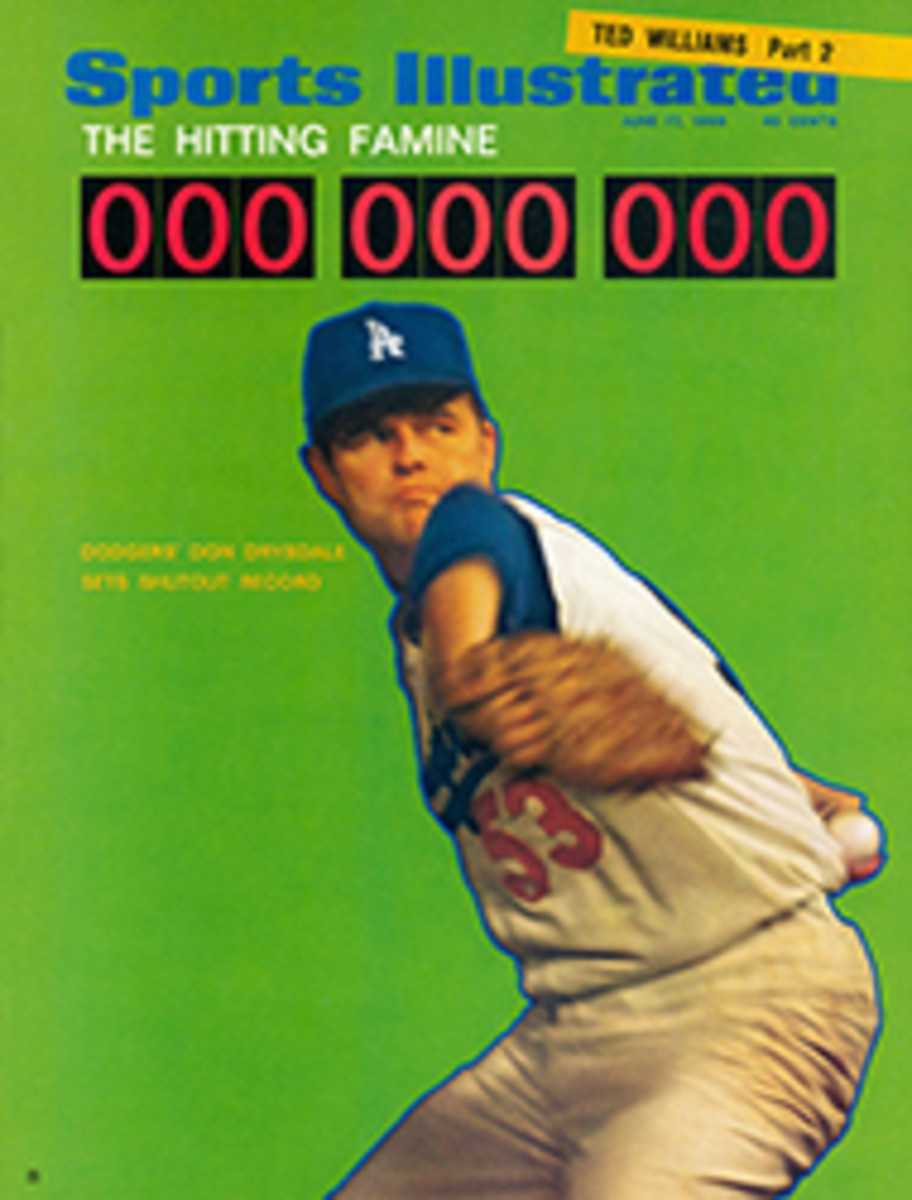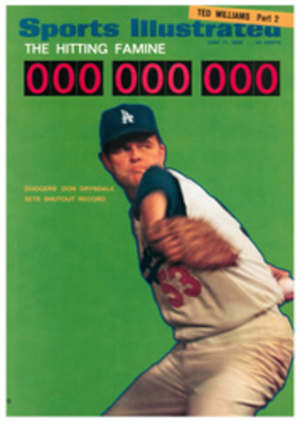
19TH HOLE: THE READERS TAKE OVER
POOR PUBLIC
Sirs:
Concerning the article Pro Football Faces a Delay of Game (May 27), Americans have traditionally derided the kid who takes his ball home when he doesn't get his way. The Players' Association is now threatening not to play if they don't get their way. If they and the owners were the only ones to be affected by the prospective strike, it might not matter much. However, since almost all of the players could find other employment and since most of the owners are rich enough to forgo football for a time, it seems as though the public (as in most strikes) will be the chief victim.
The players' demands may very well be valid, but they owe it to the public to continue playing football while they are negotiating. The players should remember that the fans, not the owners, are actually paying their salaries.
BILL LUKOSAVICH
Detroit
Sirs:
I think the NFL players are going about their demands for increased benefits in the wrong way. They want to become partners with the owners who have worked very hard to build their franchises up to where they are today. The same goes for the owners who worked hard to make their money in other ventures before they bought their teams. Just because someone is making a lot of money on his team doesn't give the players the right to expect him to split up all the profits with them.
We run a semipro football team, and a good year for us is when we lose less money than the previous year. I can appreciate what the owners went through before the big TV money. If the players are entitled to more money, they should go about getting it in a more dignified way, and do it by bargaining on an employee-employer basis.
MAX LEVENSON
President, Plainfield
Red Oaks Football Club
Plainfield, N.J.
RED ROSE
Sirs:
I have been an avid reader of your magazine for three years, and I have to say that William Leggett's article on Peter Rose was one of the best I have read (Charlie Hustle Gives Twelve Dimes on the Dollar, May 27). Rose is indeed a throwback to the oldtime ballplayer and will probably be one of the few major leaguers to bat over .300 and get 200 hits this season.
MIKE PETERSON
Hammondsport, N.Y.
Sirs:
I don't mean to doubt you, but it seems strange to me that one of baseball's alltime great hitters, Ted Williams, was not listed among those who have knocked out 200 hits in each of two or more seasons. I'm not sure, but it seems that a hitter like Williams would have had at least two 200-hit seasons.
PETER HICKLING
Woodbury Heights, N.J.
•Williams never did hit the 200 mark. He came close in 1940, with 193 hits, and again in 1949 when he had 194 hits and led the American League in home runs (43) and two-base hits (39). It is worth noting, however, that Williams shares the AL record for 100 or more bases on balls for the most (six) consecutive years and holds the major league record for the most intentional walks in one season—33 in 1957.—ED.
Sirs:
I very much enjoyed your article on Red Rightfielder Pete Rose. You did a magnificent job of summing up the parts that go together to make up one of the most colorful ballplayers of this or any other day. But you neglected to give credit to one of the great contributing forces in Pete's development, his high school baseball coach. Mr. Paul Nohr, in his 34 years as baseball coach at Western Hills High School, turned out as many major league ballplayers as have been produced at any high school in the country. He has sent eight players to the majors and there are several more now playing on minor league clubs.
STU GRAFF
Cincinnati
ASSAULT AND BATTERY
Sirs:
You might call this another chapter in the history of the "Decline and Fall of the Baseball Empire." This is the year that has seen the empire expanded once again in an effort to find new fans rather than to improve the product to win back the old ones. This is the year that has seen an alarming increase in the number of sub-.200 batting averages and an even more alarming increase in the number of batters hit by pitches.
The real irony of the Don Drysdale incident (The Giants Find It Tough, June 10) is not that the umpire invoked a practically never-called rule of the game and, thus, protected Drysdale's fifth shutout. It's the fact that, while the pitchers have been having things entirely their own way, largely through the use of the beanball, the umpire has said, "Don't look to me for help. The pitcher is the boss." It is my considered opinion that the archaic rule of "Let the batter beware" should be stricken from the rule book. While it is true that the batter will, by the instinct of self-preservation, try to avoid the ball thrown by the pitcher, he should not have to. The rule book protects the plate from being encroached upon by the batter. It should not, at the same time, grant the pitcher encroachment rights into the batter's area.
ALEX C. SHERMAN
Chico, Calif.
EAST AND WEST
Sirs:
I'm glad to finally see a sports magazine recognizing the true greatness of Dave Patrick and the Villanova track team (A Real Shot at Mexico City, June 3). Both the U.S. and the Irish Olympic teams will have a number of Villanova runners on them, and this, I'm sure, will greatly help their causes.
At the recent IC4A track meet held in Philadelphia, Patrick ran against some of the best milers in the country and won by six yards in 3:56.8. The Villanova team collected 63 points to second-place Maryland's 43. Erv Hall and Larry James won every event they entered. This includes Hall's upset victory over Roland Merritt in the 100 and the relays. Practically every time a Villanova victory came about, it broke an East or a meet record. Villanova acquired eight first-place finishes, five meet records and its ninth IC4A title in 12 years. Surely a tribute to the great coaching of Jumbo Elliott.
Look out, Jim Ryun, Earl McCullouch, Charlie Greene, Lee Evans and the great West track teams.
CHRIS FIEDLER
Darby, Pa.
Sirs:
As an avid track fan I enjoyed your article on Dave Patrick. With or without a healthy Jim Ryun, Patrick is definitely a threat at 1,500 meters. However, I feel that there are four trackmen from the University of Oregon who pose just as large a threat. The runners and their times for the mile are: Dave Wilborn (3:56.2), Roscoe Divine (3:57.2), Arne Kvalheim (3:58.5) and Wade Bell (3:59.8).
In addition, there are four other runners on the Oregon team with times under 4:05. I am quite sure no other college can boast such a field. All but Kvalheim will be eligible for the U.S. Olympic Team. Bell, a graduate student, will go in the 800 meters with a best of 1:46.1 in the 880.
This year the University of Oregon swept every mile event in which it was entered, including the first four places in the conference meet, without Kvalheim or Divine, who had to sit out the college season because of injury.
If one outstanding runner from Villanova rates a feature article in SPORTS ILLUSTRATED, should not four outstanding runners from the University of Oregon be given the same consideration, not to mention their coach, Bill Bowerman, who has developed more sub-four-minute milers than any other coach in the world?
STEVE WILLIAMS
Eugene, Ore.
MISSING THE BOAT
Sirs:
It is always heartwarming to note mention of the Coast Guard Academy in a national magazine (Won't Somebody Buy a Yacht? May 27). Too often, the Academy is forced to beg, not only for its physical needs but for recognition. Thanks for the space devoted to a most worthy institution.
R.S. TUNESKI
Lieut. Commander, USCG
FPO San Francisco
TOO OLD AND TOO NEW
Sirs:
While the turbine-piston controversy was taking the headlines at Indianapolis (Rude Setback for the Jet Age, June 10), an equally monumental battle was going on between the ubiquitous rear-engine cars and one traditional Indy roadster. While the rear-engine boys chased themselves trying to find at least 162 mph to earn their way into the starting field, Jim Hurtubise set out to qualify his home-built roadster, turning a lap over 166 mph in the process. Unfortunately, as Herk's famous hard luck would have it, that lap won't go into the record books as one of the fastest laps ever turned by a roadster at Indy—a brush with the wall cut off that qualification attempt. Two blown engines later, and running on a third engine built from salvaged parts, Herk got into the race. But then the baling-wire engine failed on an early lap.
It was a beautiful, sad sight seeing that roadster roll into the pits, smoke billowing from the front end. Without the support of a Granatelli-style circus or a Colin Chapman engineering team, this one man, driver-builder-mechanic-promoter, had run with the best of them—but not long enough.
PAUL B. ABBOTT
Cincinnati
Sirs:
I suspect that Andy Granatelli won't enter the Memorial Day Race next year unless they call it the "Indy 450."
JOHN J. LYONS
Chicago

